Business
Where’s Other Bob? – How Bob Chapek Is Ruining Disney
Published
3 years agoon
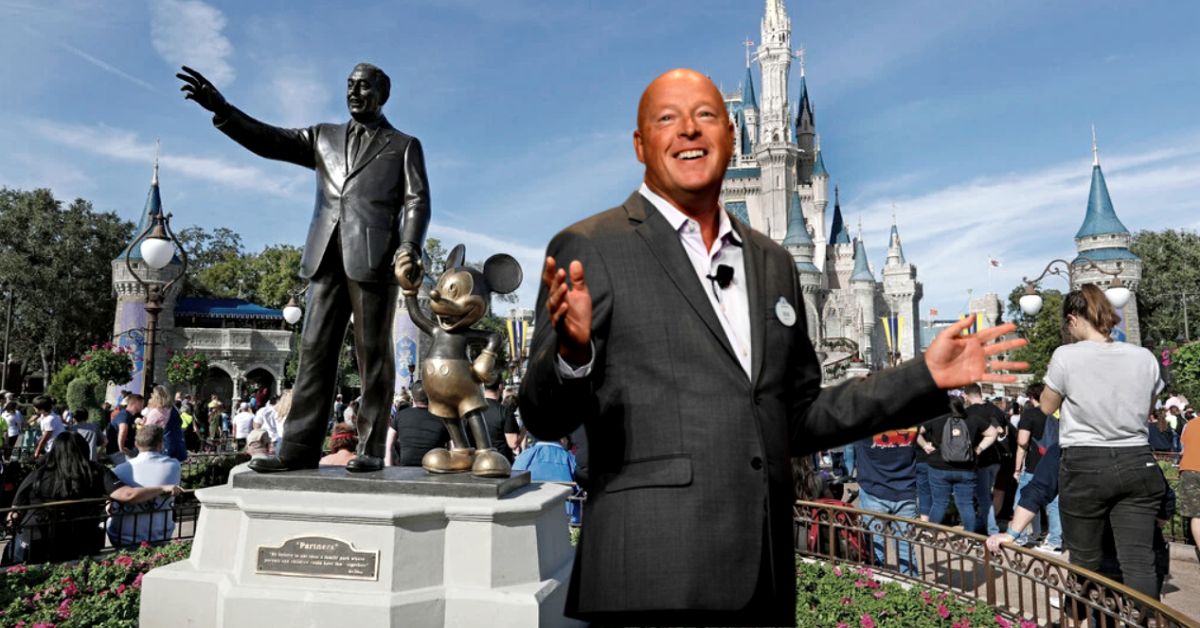
In February of 2020, Bob Iger stunned the business world by announcing that he was stepping down as the CEO of The Walt Disney Company after 15 successful years.
“I don’t want to run the company anymore.”
Fair enough, Bob.
During his tenure as CEO, Iger turned an already successful company and brand to even greater, more international heights. He broadened Disney’s library of content with the acquisitions of Pixar, Marvel, and Lucasfilm. He made critical headway in East Asian markets. Under his guidance, the beloved company’s market capitalization grew from $48 billion to $257 billion.
It wasn’t just his savvy business mind that expanded Disney’s capital and influence. Bob Iger is widely regarded to have great interpersonal relationships. People across the board adore Iger. People did business with him because they liked him and his ideas.
It wasn’t just surprising and heartbreaking that Iger was stepping down after leading Disney to such success. It was who he chose to take over that was surprising: Chairman of Disney Parks, Experiences and Products Bob Chapek.
It’s only been two years, but in that short time, it really seems that Bob Chapek is ruining Disney.
Chapek The Rising Star
Chapek began his career at Disney in 1993 as the marketing director for Buena Vista Home Entertainment at a time when VHS was still dominant but DVD was waiting in the wings. He is widely credited for bringing Disney’s home entertainment division into the digital age by leaning into the emergence of DVD and eventually Blu-ray.
Then-CEO Michael Eisner had high hopes for Chapek’s career:
“He was always an executive that you knew would be on the rise. He knew how to grow the business while adjusting to the changing marketplace, which was intense.”
And rise he did. In 2006, Chapek was promoted to president of Buena Vista Home Entertainment. Three years later, he was president of distribution for Walt Disney Studios. Two years after that, Chapek was appointed president of Disney Consumer Products.
Chapek was building success for Disney under Iger’s leadership. It wouldn’t be until 2015 that Chapek’s star rose even higher.
Disney’s Marvel-ous Galaxy Far, Far Away
After Michael Eisner was pushed out as CEO in 2005, Iger was warmly welcomed into the role. He started his tenure off very strong in 2006 when he led Disney’s acquisition of Pixar for $7.4 billion. This set an optimistic tone for Disney’s future after the post-Renaissance lull.
Roy E. Disney, in particular, was excited about Iger’s new role:
“Animation has always been the heart and soul of the Walt Disney Company, and it is wonderful to see Bob Iger and the company embrace that heritage by bringing the outstanding animation talent of the Pixar team back into the fold.
“This clearly solidifies The Walt Disney Company’s position as the domination leader in motion picture animation and we applaud and support Bob Iger’s vision.”
Iger’s vision was simple: bigger and better. In 2009, he led Disney’s acquisition of Marvel for $4 billion. In 2012, after a casual chat with George Lucas about retiring, Disney acquired Lucasfilm (and with it, the rights to the Star Wars and Indiana Jones franchises) for $4 billion.
Chapek ended up being a crucial talent for Iger’s vision. In 2015, he was named chairman of Walt Disney Parks and Resorts. In that role, he oversaw the launch of Pandora – The World of Avatar, directly managed the construction and opening of Star Wars: Galaxy’s Edge, and invested a staggering $24 billion into theme parks, attractions, hotels, and cruise ships.
That investment paid off in 2017 when Disney’s parks and resorts saw a 14% increase in operating income. This is when the media began to whisper and murmur about Chapek being a possible candidate for Disney CEO.
In 2018, as the company was preparing for the launch of Disney+, some divisions were reorganized and Chapek was given back the consumer products division in addition to his parks and resorts responsibilities.
Iger had faith in Chapek:
“Bob comes to this new role with an impressive record of success at both parks and resorts and consumer products and he is the perfect leader to run these combined teams.”
This open praise by Iger only fueled media speculation about Chapek’s candidacy for CEO.
Speaking of which…
Surprise! Chapek’s The New CEO
In 2020, Bob Chapek was announced as the next CEO of The Walt Disney Company, much to the surprise of many Disney employees who expected Tom Staggs to take over. The only caveat was that Iger, due to COVID, would handle many of Disney’s operational duties. This would ease Chapek into the role during a tumultuous time.
Iger stayed on in some capacity until the end of 2021. As he left, he warned executives not to let data influence Disney’s creative decisions.
Chapek knew the future of media consumption and made it a point to direct Disney in the right direction – producing direct-to-consumer content via Disney+:
“It’s about having a granular understanding of what the consumption patterns are, and then speaking to the consumers in a way that’s going to be relevant to the content that they want specifically for themselves.
“And, by doing so, we’ll drive engagement and consumption.”
Chapek settled into his new role with confidence. It wouldn’t be until legal problems presented themselves that Chapek’s lack of interpersonal talent and misguided priorities became a real problem for Disney.
The new CEO would unwittingly drive wedges between creative talent and executives in such a messy fashion that it would bring his status into question.
Chapek’s Embarrassing Legal Fumbles
Chapek’s talent as a “numbers guy” was no help for him as Disney navigated survival under COVID. While no one blames him for having to shut down parks and slowly reopen under CDC guidance, there were legal issues Chapek handled poorly, to put it mildly.
Black Widow Lawsuit
After a one-year absence, Scarlet Johansson reprised her role as Black Widow in her own solo film, on which she served as Executive Producer. The film proved to be a major success and vehicle for the superstar. However, due to COVID, many planned theatrical releases were canceled and moved to streaming platforms.
In July 2021, she filed a lawsuit against Disney. In the suit, she claimed that the simultaneous release of Black Widow on Disney+ breached a clause in her contract. Johansson was entitled to box-office profits, which the release on Disney+ denied her.
Disney responded… aggressively. The company went on a character attack, claiming that Johannson was indifferent to the “horrific and prolonged” effects of the pandemic. The back-and-forth between the two parties was very messy until they reached a settlement in September that year.
“Don’t Say Gay”
In 2022, Florida passed Florida House Bill 1557 (also known as the “Don’t Say Gay” bill). During the backlash, reports surfaced about Disney funding the very legislaters who wrote and sponsored the bill.
Normally, a company funding politicians wouldn’t come under much scrutiny. But the extremity of the bill was in direct contradiction with Disney’s proudly public pro-LGBTQ+ stance.
In a company memo, Chapek refused to criticize the controversial bill and intentionally played down the company’s backing of anti-LGBT legislators. His statements and lack of action drew quick backlash. And then came the backpedaling:
“I want to be crystal clear: I and the entire leadership team unequivocally stand in support of our LGBTQ+ employees, their families, and their communities. And, we are committed to creating a more inclusive company — and world.
“We all share the same goal of a more tolerant, respectful world. Where we may differ is in the tactics to get there. And because this struggle is much bigger than any one bill in any one state, I believe the best way for our company to bring about lasting change is through the inspiring content we produce, the welcoming culture we create, and the diverse community organizations we support.”
Disney announced that is was withdrawing all political donations and instead turning their financial support to LGBTQ+ causes. Florida Governor Ron Desantis retaliated in a way he almost certainly did not think through.
But that’s an entirely different story.
Will Chapek Squander Iger’s Success?
It’s a little early to say for sure. After all, it’s only been two years. Chapek is having a rocky start to his tenure, to say the least. But there’s always room for improvement.
The test of a good CEO is how they handle bad situations. Chapek had little control over COVID but had plenty of control how Disney handled the Black Widow lawsuit and the “Don’t Say Gay” bill. The tensions he created between executives and creatives is incredibly damaging to a company that champions creativity above all else.
Chapek, as of today, still hasn’t quite found his footing. His latest embarrassing blunder involved comparing himself to Iron Man and confusing Disneyland’s motto for Disney World’s at his alma matter, Indiana University:
“IU was my ticket to a new life…I was kind of desperate. Desperate to demonstrate my worthiness and desperate not to waste a dime of my parents’ money on a school that was frankly testing my limits at the time.
“But that desperation turned to determination and my dream of defying expectations and the odds took over. And just like Iron Man draws his energy from that Arc Reactor, I get a thump from my drive to prove myself every single day.
“It’s a lifetime power supply that pushes me through doubts, difficulties and around those who underestimate kids from the region.”
In the speech, Chapek confused Disneyland’s motto “The Happiest Place on Earth,” for Disney World’s “The Most Magical Place on Earth.” OOPS. The motto mixup gaffe wouldn’t be that big of a deal, if Chapek hadn’t run Disney’s parks for five years.
Bob Chapek has become a bit of a joke of a CEO. Whether or not he can turn his reputation around is entirely up to him. As of now, morale at Disney post-Iger is low and does not like the direction Chapek has been driving the iconic company. The creative geniuses that drive Disney’s success must be wondering, “Where’s other Bob?”
Iger, despite rumors of tensions between the two Bobs, has expressed support for Chapek:
“He’s very different from me. That doesn’t mean he can’t do that job well. Give him time. It’s the only fair thing to do.”
Fair enough, Bob.
Chris Blondell is a Philadelphia-based writer and social media strategist with a current focus on tech industry news. He has written about startups and entrepreneurs based in Denver, Seattle, Chicago, New Haven, and more. He has also written content for a true-crime blog, Sword and Scale, and developed social media content for a local spice shop. An occasional comedian, Chris Blondell also spends his time writing humorous content and performing stand-up for local audiences.

You may like
Business
Discover 2025’s Top 10 Online Banks for Smart Savings
Published
2 months agoon
January 24, 2025
McKinsey & Company reveals that 73 percent of bank transactions worldwide now take place online, such as in digital banks and payment systems. The increasing demand of customers for more flexible banking options is attributed to the rise in online banking channels. People prefer online banks because they offer simple tools and resources to manage their money. With this trend, online banking is here to stay.
Best Online Banks: A Quick Guide
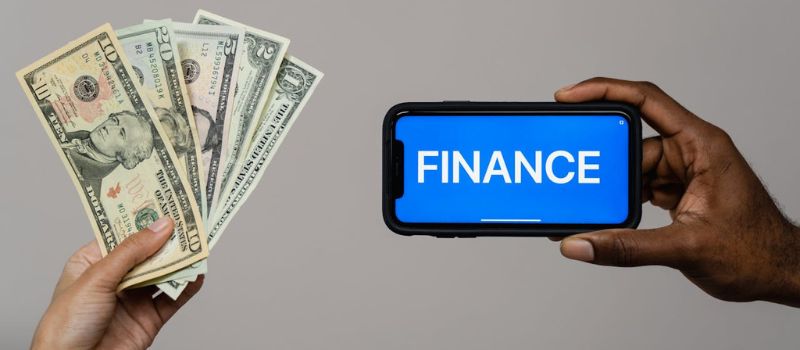
Image Source: Tima Miroshnichenko from Pexels
An online bank should cater to your financial needs like any traditional alternative. Here are a few factors to consider when choosing online banks:
Annual Percentage Yield (APY)
The annual average yield offered under each account will tell you how much interest your money will earn. When comparing online banks, consider one that offers competitive rates across all of its deposit accounts.
Products and Services
Some online banks offer a complete package of banking products, including checking, savings, certificates of deposit (CDs), and money market accounts. They also offer loans and credit cards. So, look at the products and services offered by online banks before making a decision. You may also combine the services of an online bank with a traditional brick-and-mortar bank.
Account Access
Typically, online banks offer 24/7 access to your account through their website or app. However, you should also consider how the bank handles deposits and withdrawals. It is crucial to know the restrictions, if any, on transfers, the limitations on withdrawals, and whether the bank accepts free cash deposits.
ATM Network
An ATM network is essential if you frequently withdraw or deposit cash. An extensive ATM network will help you avoid transaction fees. If the bank is not associated with a large ATM network, you should look for one that will reimburse out-of-network ATM fees.
Digital Tools
The best online banks offer innovative digital tools to help you accomplish financial goals. For example, Ally will help you organize your savings goals with savings buckets and analyze your spending habits to safely transfer available funds from your checking to your savings account.
Fees
You should avoid any bank, online or otherwise, that charges monthly fees or has extensive requirements to avoid them. Many online banks offer no-fee deposit accounts, require a low or $0 initial deposit to open the account, and don’t need a minimum balance to avoid maintenance fees. However, make sure you know whether the bank charges excessive withdrawal fees, paper statement fees, or fees for other services that you may want to use regularly.
Customer Service
Since you won’t have access to in-person customer service with an online bank, determine how you can contact a customer service representative if needed. Most online banks offer telephone support, live chats, or assistance via email. Some online banks also offer access to live support via extended hours or 24/7.
10 Top-Performing Online Banks
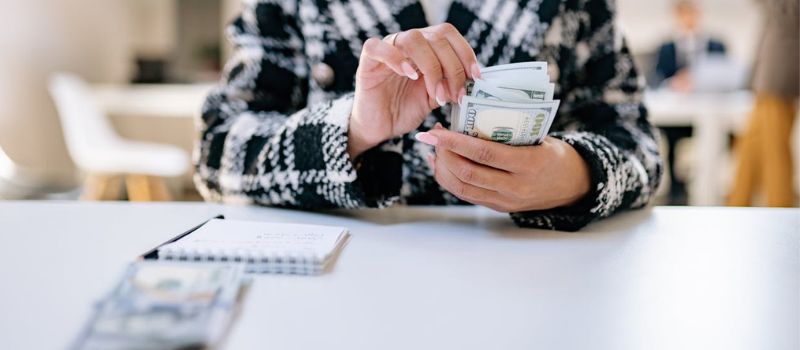
1. Alliant Credit Union
Alliant Credit Union is an NCUA-insured online credit union offering members competitive deposit account rates and minimal fees. Most accounts don’t charge maintenance fees, but these can be waived if you sign up for e-statements. Membership is available for current or former employees of Alliant’s partner businesses in the US. You can also become an Alliant Credit Union Foundation digital inclusion advocate to become eligible for membership. Signing up costs $5, but Alliant will pay the one-time fee on your behalf.
Alliant’s certificates earn solid APYs, with terms ranging from one year to five years. Its savings account earns a respectable yield of 3.10% APY on balances of $100 or more, but there are plenty of higher-yielding savings accounts with APYs over 5%. We like that Alliant’s High-Rate Checking account pays a better yield than other checking accounts and doesn’t require a minimum balance or charge service fees.
2. Varo Bank
Varo offers checking and savings accounts but doesn’t offer deposit certificates. Savings account comes with an APY starting at 2.50%. That rate becomes 5.00% for the first $5,000 if a customer meets the monthly requirements of the bank.
Cash deposits have limits and fees, and Varo customers can only deposit cash at a 3rd party retailer that joins the Green Dot network, including CVS, 7-Eleven, or Walgreens. On the other hand, cash withdrawals can be made through an ATM in the Allpoint network for free.
3. Ally Bank
Established in 2009, Ally Bank is full-service online bank that offers competitive rates on all deposit accounts. Customers can enjoy the highest rates for all balances, regardless of tier. Overall, the high APYs, minimal fees, and reliable customer service support makes Ally an excellent banking solution for millenials who want better savings and retirement plans.
4. Discover Bank
Discover Bank offers deposit accounts, credit cards, personal loans, and student loans. We like that Discover offers deposit accounts, such as CDs, savings, and a money market account, at competitive rates with no fees. While its $2,500 minimum deposit requirement for its CDs is steep, there is no minimum deposit required to open and maintain a savings, money market, or checking account.
5. Laurel Road
Laurel Road, powered by KeyBank, helps healthcare and business professionals achieve their financial goals. They offer student loan refinancing, mortgages, personal loans, credit card, and specialized savings accounts. Laurel Road also offer Loyalty Checking with a low APY. New customers can earn a sign-up and monthly bonus with qualifying direct deposits. In addition, both savings account and checking account has no monthly free or minimum balance requirement.
6. Capital One
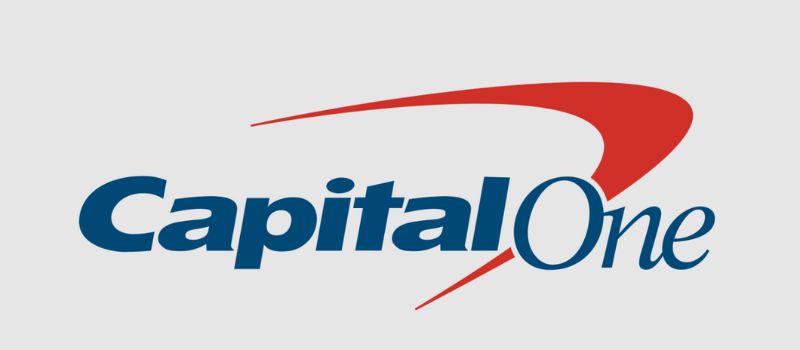
Capital One offers an above-average 3.80% APY on its savings account, strong rates on its certificates of deposit, and 0.10% APY on all checking balances. All accounts are free, and customers can access over 70,000 free ATMs.
7. American Express National Bank
This bank offer High Yield Savings Account with a 3.80 APY. Likewise, certifcate deposits (CDs) have competitive rate and there is no minimum opening deposit. You don’t have to worry in case you encounter banking-related issues because American Express National Bank has 24/7 phone support and online chat support.
8. Marcus by Goldman Sachs
Launched in 2016, Marcus is the online-only banking arm of Goldman Sachs, one of the 15 largest banks in the US. The bank’s savings accounts and CDs offer competitive yields and no monthly maintenance fees.
While some online banks offer no minimum deposit requirement to open an account, Marcus requires a $500 deposit to get started with a CD. There’s no minimum deposit requirement for its high-yield savings account. Marcus doesn’t offer a checking account or money market account.
9. My Banking Direct
My Banking Direct is the online-only arm of Flagstar Bank, N.A., which New York Community Bancorp owns. The bank is a lean financial service that offers only savings, checking, and a five-month CD term. The APYs on its savings account and CD are among the best available today.
In addition, the bank doesn’t charge monthly or overdraft fees and provides surcharge-free ATM access through a 55,000 Allpoint and Presto network. To open a savings account, you must deposit $500. Checking accounts can be opened with just $1. During the week, you can access extended customer service hours until 8 p.m. ET and 2 p.m. ET on Sundays.
10. SoFi
SoFi (short for Social Finance) was the brainchild of Stanford Graduate School of Business students who created an alumni-funded lending source initially focused on refinancing student loans. Since then, SoFi has expanded into a variety of loan categories and now offers online checking and savings accounts.
Conclusion
Online banks lets manage your money and account via a website, mobile device, or app. Also, online banks generally offer higher interest rates and fewer fees than traditional banks. You should remember that while technology makes everything accessible, online banks also have some limitations. For instance, online-only or internet-only banks lack in-person interaction. However, if you are comfortable managing your money online, online banks are a convenient and low-cost option.
Business
The Latest In The AI Boom: What Entrepreneurs Need To Know In 2025
Published
2 months agoon
January 24, 2025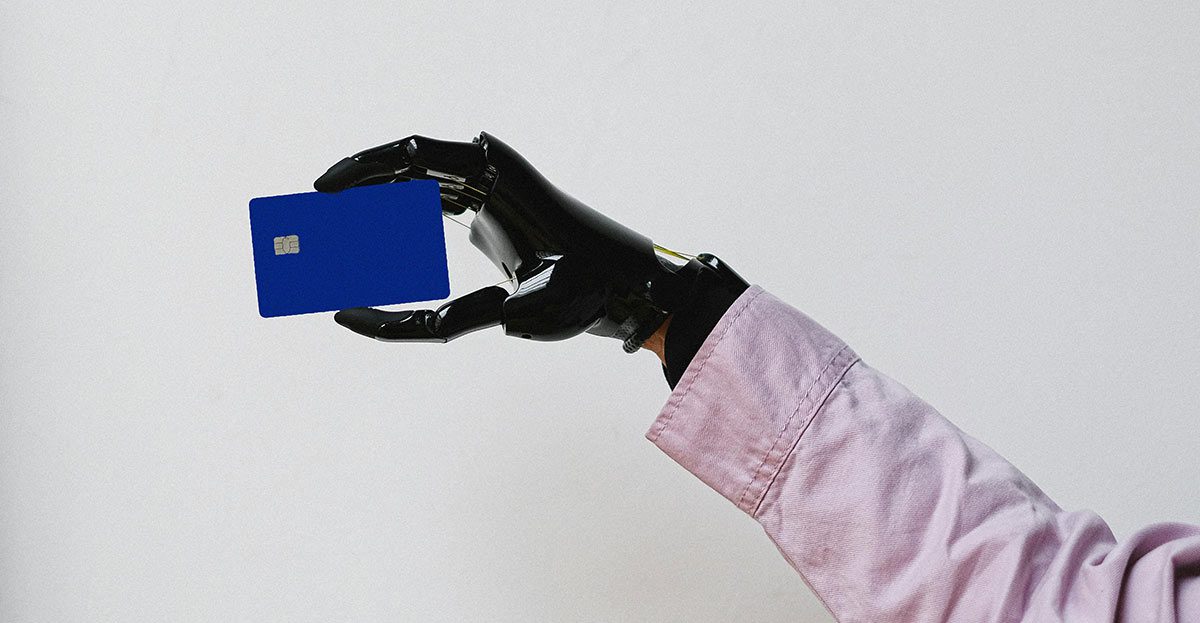
Anyone unaware of how AI is revolutionizing almost everything we do daily could be living under a rock. Artificial intelligence has evolved at an unprecedented speed, transforming industries and reshaping how we operate businesses. Let’s explore the latest developments in the AI boom and what entrepreneurs can do to stay competitive.
AI’s Current State in Business
According to recent industry reports, the AI market is expected to surpass $1 trillion by 2030, with an annual growth rate of more than 35%. This is why businesses across all industries are investing heavily in AI technologies. Whether startups or global enterprises, they do this to stay competitive and meet the evolving expectations of their clients.
How Businesses Are Using AI to Gain a Competitive Edge
AI use by many companies is now commonplace thanks to its many benefits. There’s the enhanced efficiency, boosted productivity, and improved customer experience, among many others. Some of these applications include:
- AI-Powered Automation: Repetitive tasks such as data entry, customer service interaction, and marketing campaigns can now be done using AI. It frees you up to give you more valuable time and resources.
- Predictive Analytics: With AI technology, vast amounts of data to forecast trends, customer behavior, and market demands are easily within your reach. This helps you make better decisions.
- Personalized Customer Experiences: Chatbots and AI-driven recommendation engines are just two examples of how AI can help you provide more tailored customer experiences. It also allows you to deliver hyper-personalized content and services previously available.
- Operational Efficiency: AI optimizes supply chains, inventory management, and logistics. This helps reduce costs and improve your turnaround times.
Many businesses nowadays are using AI to disrupt industries while achieving success. You’ll find AI-powered chatbots handling customer support and content creation, while e-commerce platforms use AI-driven recommendations to boost sales, as Shopify exemplifies. In health care, AI improves diagnostics and treatment accessibility, while marketers use AI for data-driven campaigns and optimized ad spending.
Emerging AI Trends You Need to Watch
Source: Rahul Pandit on Pexels
It seems that entrepreneurs have no option but to embrace the transformative trends brought about by AI. The following are a few you must take note of:
- AI-powered automation is simplifying operations and cutting costs.
- Generative AI is revolutionizing content creation, marketing strategies, and product design.
- AI in customer service uses chatbots, personalization, and predictive analytics to meet growing demands.
- AI ethics and regulation ensure businesses comply with evolving laws and ethical standards.
- AI-driven decision-making helps businesses gather data insights for smarter, more strategic choices to drive long-term growth and success.
Must-Have AI Tools for Entrepreneurs in 2025
It’s not getting on the bandwagon but keeping up with the times. Here are a few examples of AI tools you can use for efficiency and growth:
- Marketing and SEO: Tools like Jasper and SurferSEO can help you craft optimized content, analyze trends, and improve search rankings with ease.
- Sales and CRM: HubSpot AI and Salesforce Einstein offer intelligent automation, customer insights, and predictive analytics to boost sales performance.
- Productivity and Automation: Zapier AI is an excellent option for task automation, while Notion AI is great for smart content organization.
- Finance and Analytics: Quickbooks AI and Tableau AI provide real-time financial insights, forecasting, and data visualization.
When choosing the right AI tools for your business, consider scalability, integration capabilities, ease of use, and cost-effectiveness. Make sure they align with your business goals and your workflow needs.
The Challenges Entrepreneurs Face in Their Adoption of AI
Source: Google DeepMind on Pexels
Admittedly, AI has immense potential; however, adopting it comes with challenges that entrepreneurs must navigate. Below are a few:
- Cost Consideration and ROI Expectations: When you implement AI solutions, you may need significant upfront investment. Also, measuring long-term returns can be complicated.
- Skills Gap: You will wonder if you need AI expertise or if you can rely on external support to use AI in your business effectively.
- Data Privacy and Security Concerns: Protecting sensitive customer information while ensuring compliance with data protection regulations can be challenging.
- Overcoming Resistance to AI Integration with Your Team: Your team members may fear job displacement or struggle adapting to new AI-driven workflows and tools.
Practical Steps to Integrate AI into Your Business
Here are a few easy steps to take if you want to integrate AI into your business:
- Assessment of Your Business Needs: Identify which areas of your business would benefit from the technology. Is it customer service, operations, or marketing?
- Start with Low-Risk Implementations: Look for small-scale projects that are easy to implement and carry minimal risk. You can start by adopting AI-driven tools for marketing, chatbots for customer support, or simple automation tasks.
- Measure AI Impact and Scaling: Assess the performance and impact of your chosen AI solutions on your business. Measure key metrics like productivity, cost savings, and customer satisfaction. This way, you’ll find out if your AI adoption is giving the value your business needs. Scale its use as you gain confidence and see more positive results.
- Partner with AI Consultants: Work with AI experts or consultants to guide the integration process. This ensures you’re using the right tools and strategies. This can also help you overcome any technical challenges you may face.
The Future of AI in Entrepreneurship
Market research firms, AI experts, and thought leaders see AI going through the following:
- AI’s role in startups and small businesses will become essential, providing them with affordable solutions to automate tasks, enhance marketing, and improve customer service, leveling the playing field with larger companies.
- AI will transform industries such as healthcare, retail, and finance. It can dramatically improve efficiency and customer experiences. It will also create new job roles, requiring business owners to adapt and upskill their workforce.
- Additionally, entrepreneurs must stay ahead of the curve with continuous learning and adaptation. This will keep them competitive and ensure long-term success.
Conclusion
Entrepreneurship has been and will continue to be impacted by AI, but most of it will be transformative. The technology presents significant opportunities to help businesses thrive, leaving no option for business owners but to embrace these emerging trends. You need to start now, keep learning, and integrate strategically.
Business
Omnichannel Marketing Platforms: Definition, Examples & Tools
Published
3 months agoon
December 22, 2024By
Kai Kelis
Omnichannel has become a recent buzzword online. That’s because the business landscape has shifted most of their marketing efforts into virtual communication. Advertisers are always looking for new ways to boost online connections with audiences while increasing sales. This is how “omnichannel” sprouted quickly and into every marketer’s arsenal. But what is omnichannel, and what are some omnichannel marketing platforms that do the job? Read on to find out.
What is Omnichannel Marketing?
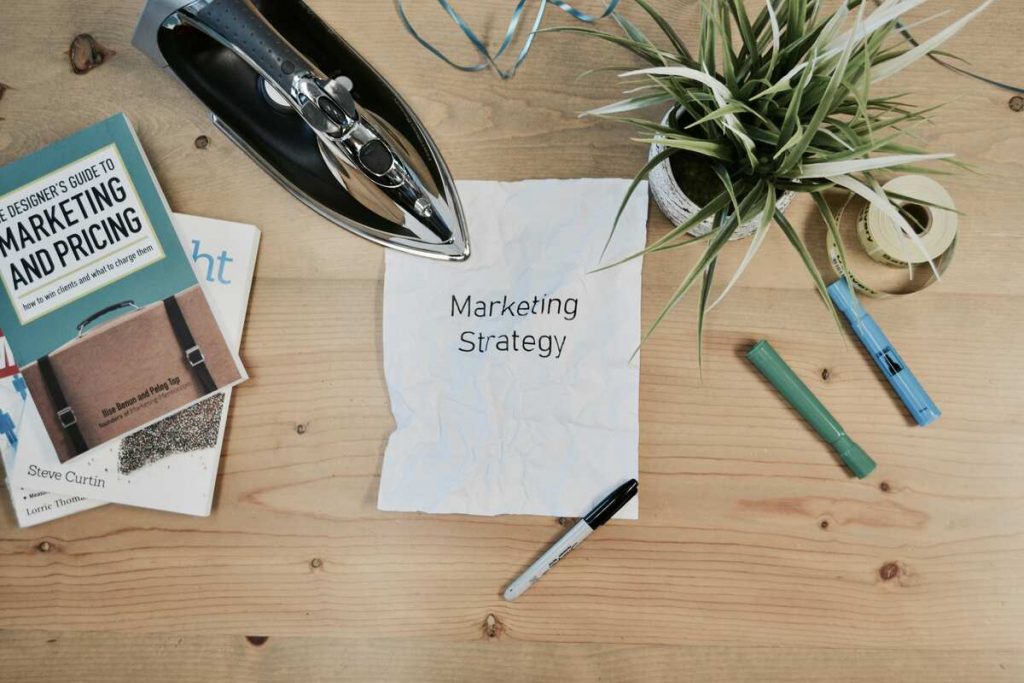
The concept of omnichannel is simple. It aims to provide marketers a quick way to communicate with their customers and get as much engagement and conversion as possible from one go. Their objective is for customers to enjoy a seamless shopping experience on multiple brand channels, including online, mobile, or in-store. This means, marketers would have to show customers the same pricing and promotions across all brand channels.
However, it also goes beyond that. You have to ensure that customers can navigate through different channels with ease. This means customers can switch between your brand channels without any roadblocks. For instance, a customer can order from your online store and have the option to pick it up from your physical location. One way to increase sales is by offering customers additional items to boost order value.
Why is Omnichannel Marketing Important?

Omnichannel marketing is crucial these days since most people have shifted to online browsing and shopping. Moreover, if advertisers market on three or more channels, this could result in a 90 percent higher retention rate compared to using a single-channel campaign.
Additionally, omnichannel marketing also strengthens your brand messaging since campaigns are consistent across all platforms. But what are the primary reasons why advertisers focus on omnichannel marketing?
- Brands will get high customer retention
- Gains customer loyalty
- More personalization in the customer’s journey
- More integrated business
- Better customer insight
- Smooth and enjoyable customer experience
How Does Omnichannel Advertising Work?
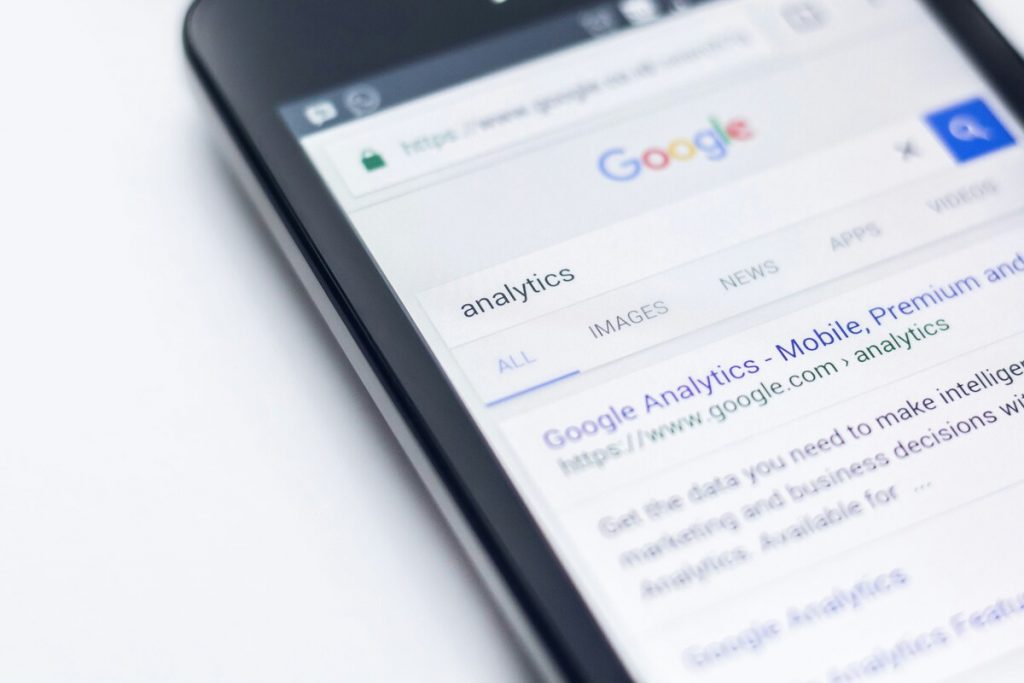
An example of omnichannel marketing is when a sports retail store sends its prospects an email containing a recent promotion on its newly launched running shoes. The email content shows the link to the promotion. Once customers click this link, they are taken to the brand’s eCommerce website. Instructions also let them know they can get it from the brick-and-mortar store.
Another example is when a furniture store shows a behind-the-scenes video on YouTube about how its experts craft their pieces. Once viewers watch the video, they are welcomed with a link inviting them to join the brand’s email newsletter.
10 Omnichannel Marketing Platforms

Here are 10 best omnichannel marketing tools.
1. BigCommerce
This online and offline sales tool is for large-scale businesses looking to streamline their advertising strategies. BigCommerce unifies all marketing campaigns in an easy and convenient platform, including in-store, online, social media, and marketplaces. It can also handle large volumes of sales, traffic, and transactions, providing customers with a smooth experience.
2. NewStore
NewStore is the tool for all your POS and inventory management systems. It can manage orders, inventory, and customer data across the brand’s channels. It also comes with robust marketing tools that offer personalized engagement, such as push notifications, mobile apps, and location-based marketing.
3. Glassix
If you’re looking for the best omnichannel marketing platforms for communication, Glassix sits at the top of the list. It’s an AI-powered advertising tool that helps with email, SMS, live chat, messaging apps, and social media. Using Glassix means tracking all customer interactions and messages in one user-friendly interface is easy. It also lets you send targeted messages to your audiences based on their preferences and behaviors.
4. Desku
In addition to integrating all customer communications in one interface, Desku also helps with automation functions, such as chatbots, canned responses, ticketing systems, and more. Plus, it offers reporting tools and analytics to monitor progress.
5. Omnisend
Omnisend is the platform for all your SMS and email marketing campaigns. It’s best suited for eCommerce businesses and allows advertisers to create, monitor, and automate campaigns across all channels. It offers drag-and-drop features and is extremely easy to use.
6. Tidio
When searching for the best omnichannel communication platform, Tidio ranks high. It’s designed to facilitate customer interactions, manage inquiries, and offer real-time support.
7. Adobe Experience Cloud
You can’t succeed in omnichannel marketing without using a cloud-based service. And Adobe Experience Cloud ensures you get the right cloud-based solution for optimizing customer experiences. You can use this tool to build and manage customer journeys through AI-powered insights. You can also integrate this platform with other Adobe tools like Adobe Experience Manager, Adobe Target, Adobe Campaign, Adobe Analytics, and more.
8. Revealbot
If you’re spending time on paid ads, Revealbot will help you manage them in one user-friendly interface. It’s a marketing tool that helps optimize digital advertising campaigns on Instagram, Facebook, TikTok, and Google Ads. You can use this tool to set automation features, campaign budgets, and custom ad rules.
9. Shopify Plus
Shopify Plus if one of the best omnichannel marketing platforms for eCommerce businesses. It helps create a streamlined customer shopping experience. From workflows and checkouts to customer segmentation and targeted marketing campaigns, this is a reliable tool to use.
10. Oracle CX Commerce
Oracle CX Commerce is the best solution for B2B and B2C businesses. It’s a cloud-based eCommerce platform that helps provide personalized experiences. It also offers advanced features that simplify segmentation, customized content, targeted promotions, and customer engagement.

Digital Nomads Flock To These 10 Amazing Tax-Free Cities

Adopting a Cat? Here’s Your 5-Item Starter Kit

Discover 2025’s Top 10 Online Banks for Smart Savings

The Latest In The AI Boom: What Entrepreneurs Need To Know In 2025

Taylor Swift’s Fortune: The Billionaire Behind The Eras Tour

8 Popular Mobile Payment Systems
